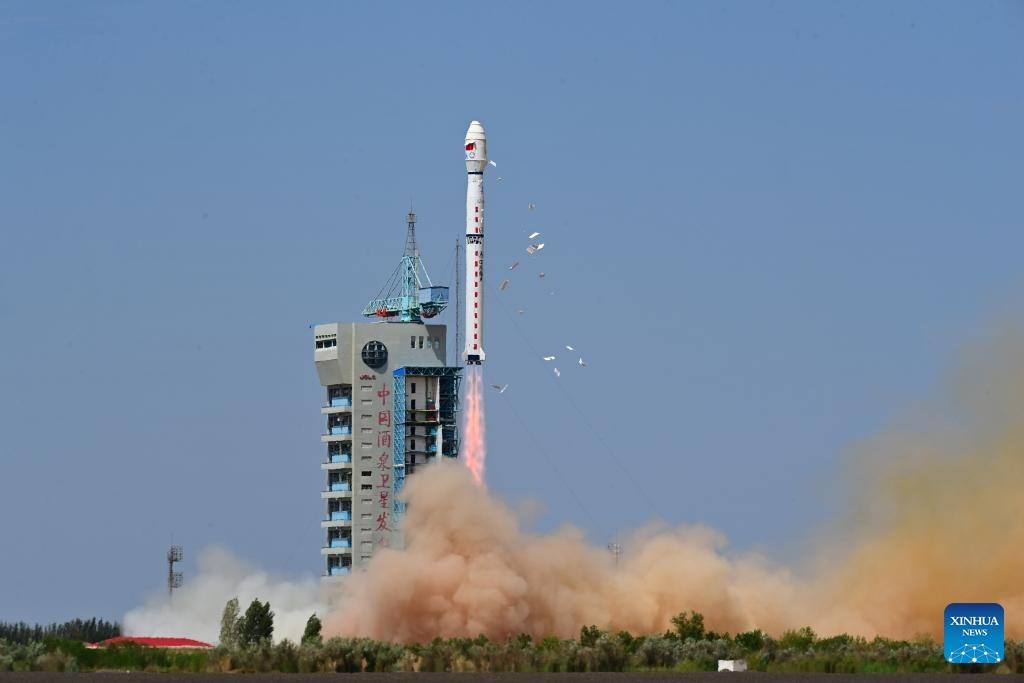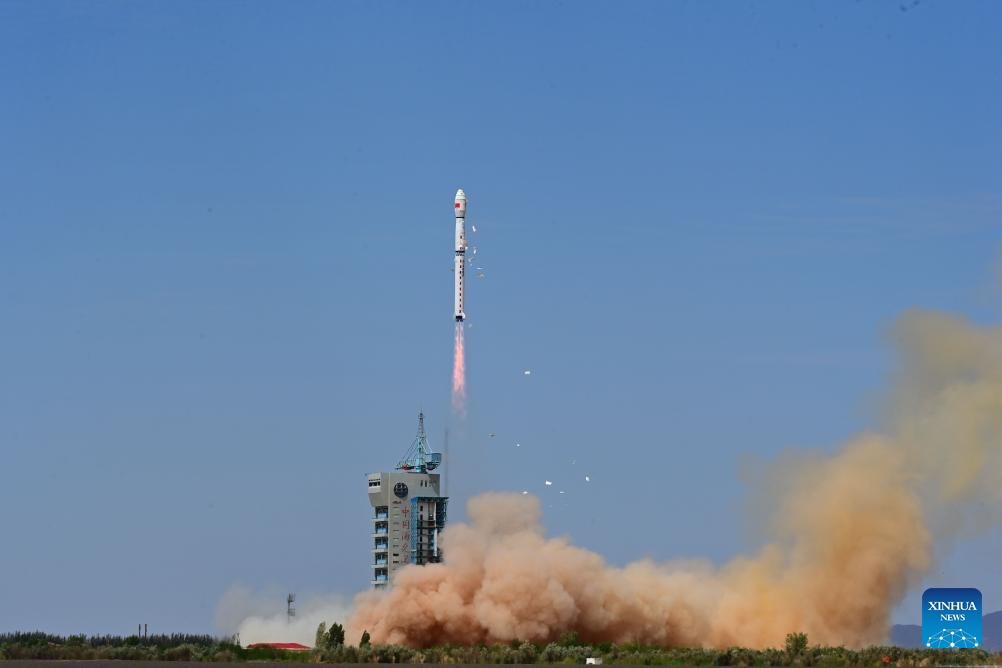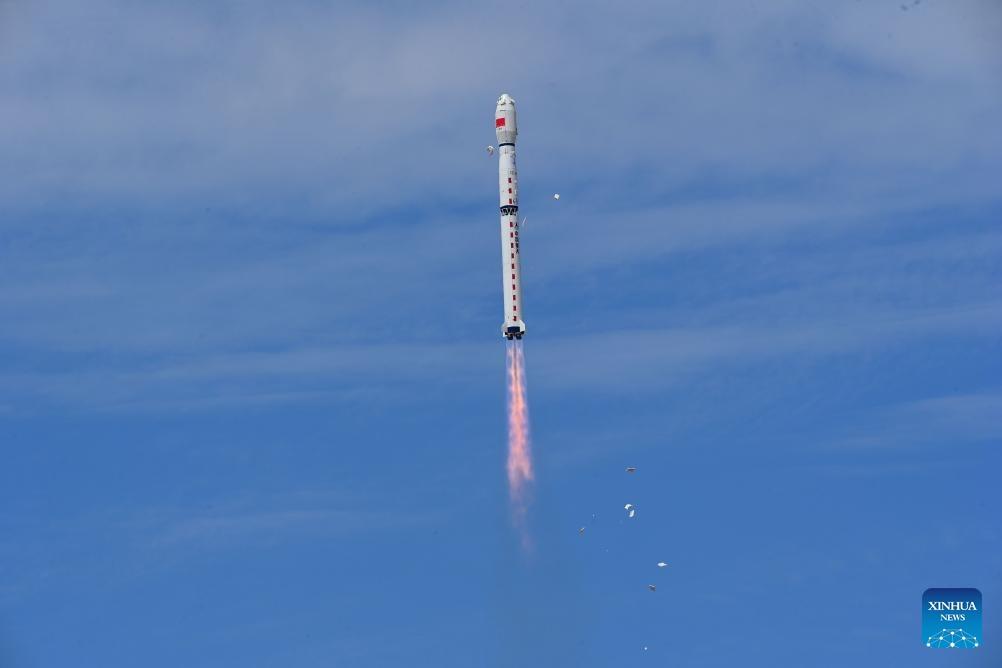
A Long March-4C rocket carrying the Fengyun-3 06 satellite blasts off from the Jiuquan Satellite Launch Center in northwest China, Aug 3, 2023. The launch marked the 481st flight mission of the Long March series carrier rockets. (PHOTO / XINHUA)
China launched a meteorological satellite on Thursday for weather forecasting, climate change monitoring and research on atmospheric chemistry.
A Long March 4C carrier rocket lifted off at 11:47 am at the Jiuquan Satellite Launch Center in northwestern China and flew about 22 minutes before placing the Fengyun 3F into a sun-synchronous orbit, according to the China National Space Administration.
Fengyun 3F is mainly tasked with obtaining three-dimensional, multi-spectral data of atmosphere, land and ocean surface around the world. Specifically, it will be used to monitor global ozone distribution, ice and snow coverage, sea temperatures, natural disasters, and ecosystems
The administration said in a news release that the satellite is equipped with 10 sets of advanced equipment including a hyperspectral infrared atmospheric sounder, a micro-wave temperature sounder and an Earth radiation measurement device. It will replace the Fengyun 3C, which has been operating for nearly 10 years and should have retired years ago, it noted.
ALSO READ: China's Long March rocket conducts 150th successful launch
Fengyun 3F is mainly tasked with obtaining three-dimensional, multi-spectral data of atmosphere, land and ocean surface around the world. Specifically, it will be used to monitor global ozone distribution, ice and snow coverage, sea temperatures, natural disasters, and ecosystems, the administration noted.
Its products will help improve short-term climate predictions, climate change forecast, climate emergency response, as well as disaster prevention and relief, it added.
 A Long March-4C rocket carrying the Fengyun-3 06 satellite blasts off from the Jiuquan Satellite Launch Center in northwest China, Aug 3, 2023. The launch marked the 481st flight mission of the Long March series carrier rockets. (PHOTO / XINHUA)
A Long March-4C rocket carrying the Fengyun-3 06 satellite blasts off from the Jiuquan Satellite Launch Center in northwest China, Aug 3, 2023. The launch marked the 481st flight mission of the Long March series carrier rockets. (PHOTO / XINHUA)
China launched its first weather satellite, Fengyun 1A, in 1988. Since then, it has lifted 21 Fengyun meteorological satellites. Currently, the nation operates 10 weather satellites – two of Fengyun 4 series, three of Fengyun 2 series and five of Fengyun 3 series.
 A Long March-4C rocket carrying the Fengyun-3 06 satellite blasts off from the Jiuquan Satellite Launch Center in northwest China, Aug 3, 2023. The launch marked the 481st flight mission of the Long March series carrier rockets. (PHOTO / XINHUA)
A Long March-4C rocket carrying the Fengyun-3 06 satellite blasts off from the Jiuquan Satellite Launch Center in northwest China, Aug 3, 2023. The launch marked the 481st flight mission of the Long March series carrier rockets. (PHOTO / XINHUA)
Thursday's space mission was China's 32nd rocket launch this year and the 481st flight of the Long March rocket family. It was also the 100th launch of the Long March 4 series of rockets.
 A Long March-4C rocket carrying the Fengyun-3 06 satellite blasts off from the Jiuquan Satellite Launch Center in northwest China, Aug 3, 2023. The launch marked the 481st flight mission of the Long March series carrier rockets. (PHOTO / XINHUA)
A Long March-4C rocket carrying the Fengyun-3 06 satellite blasts off from the Jiuquan Satellite Launch Center in northwest China, Aug 3, 2023. The launch marked the 481st flight mission of the Long March series carrier rockets. (PHOTO / XINHUA)
Both the rocket and satellite were launched on Thursday, and were built by Shanghai Academy of Spaceflight Technology, one of the major subsidiaries of China Aerospace Science and Technology Corp, the nation's leading space contractor.
Li Hongyang contributed to this story.


